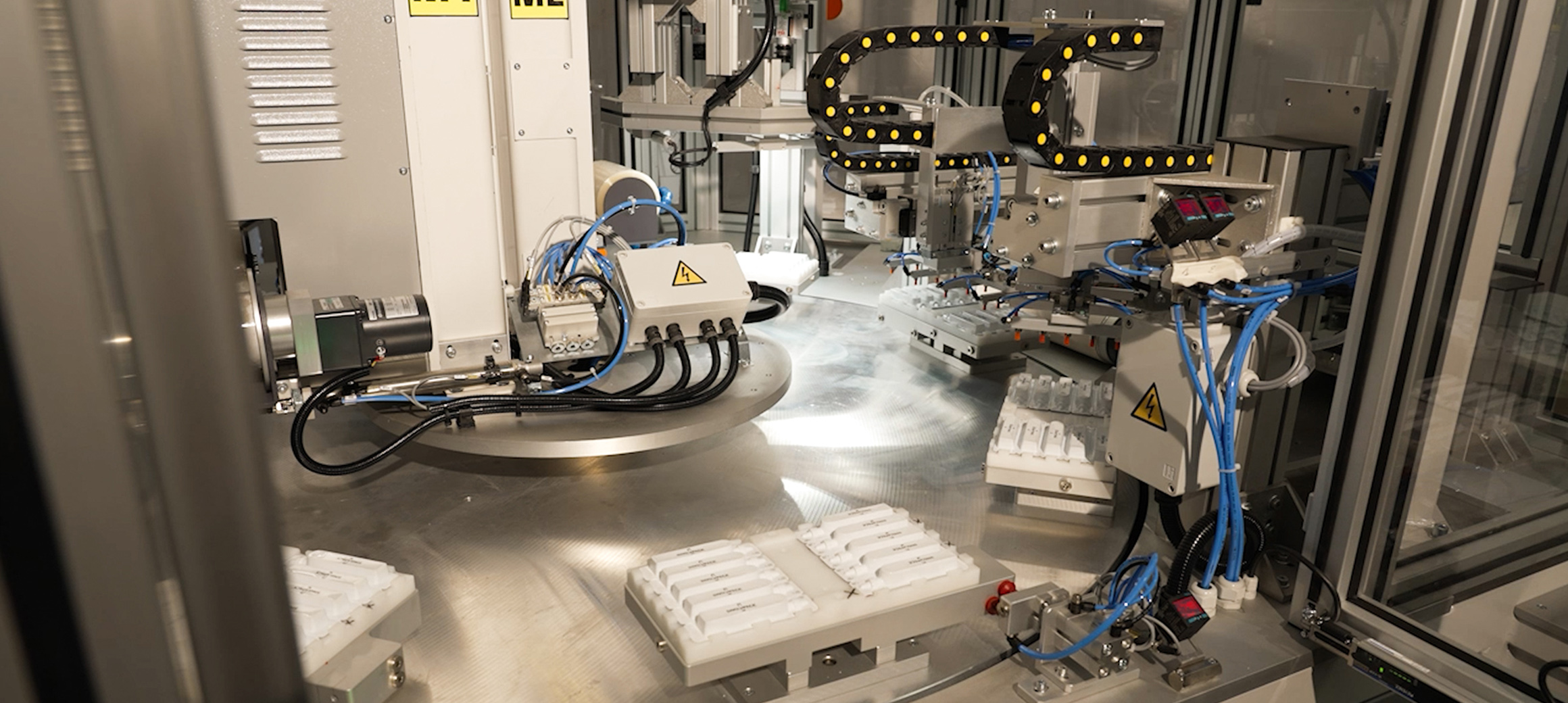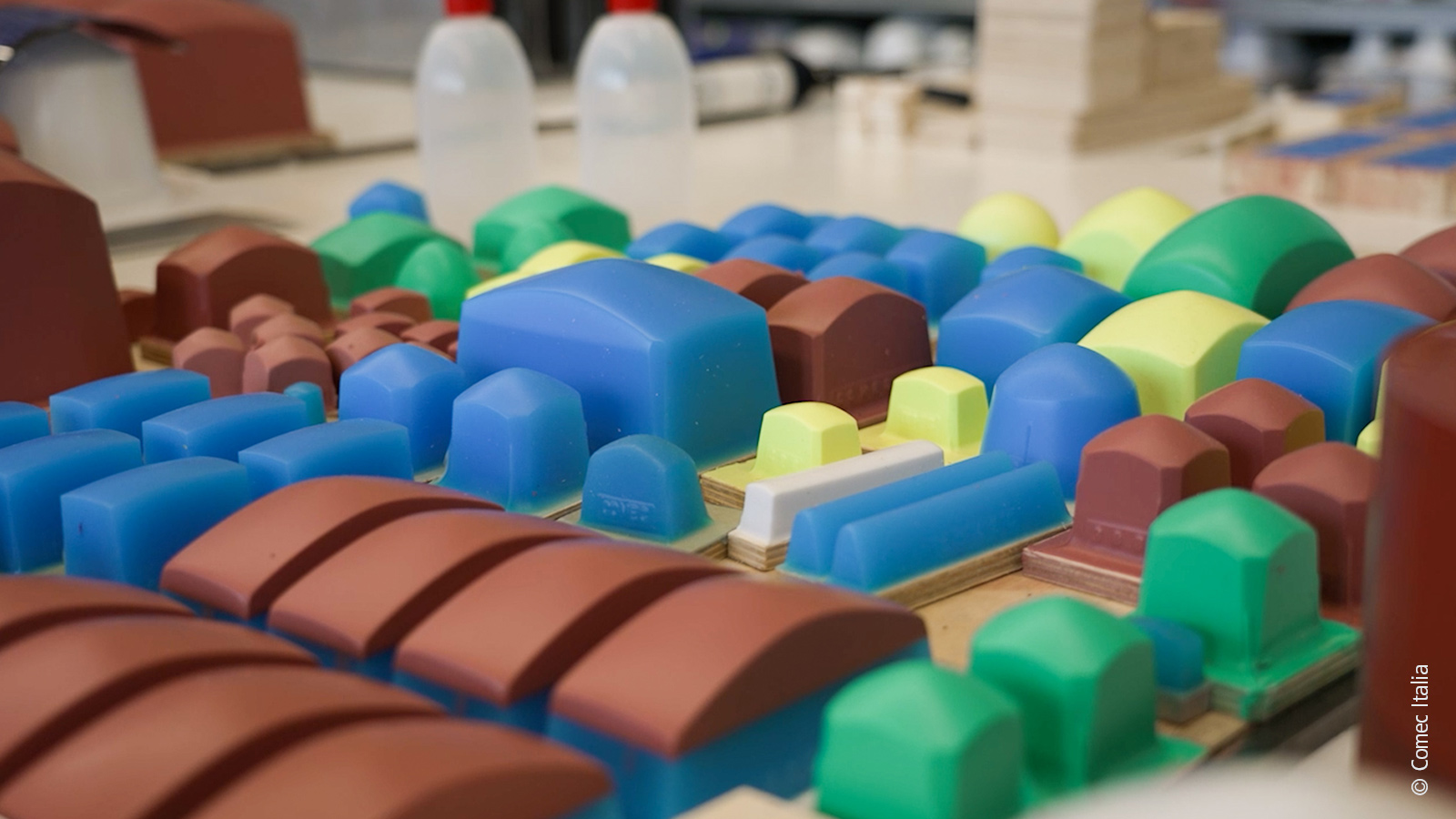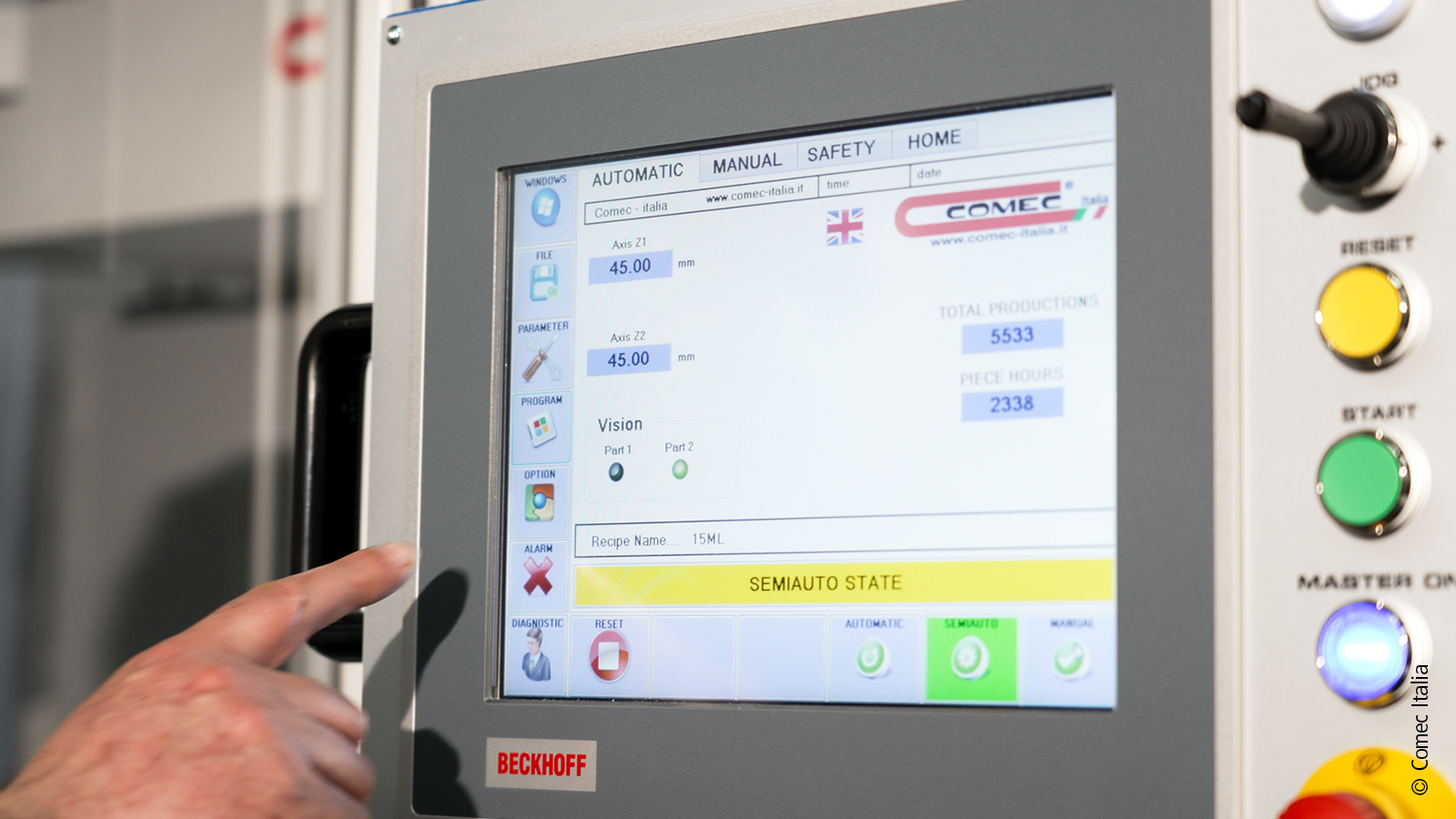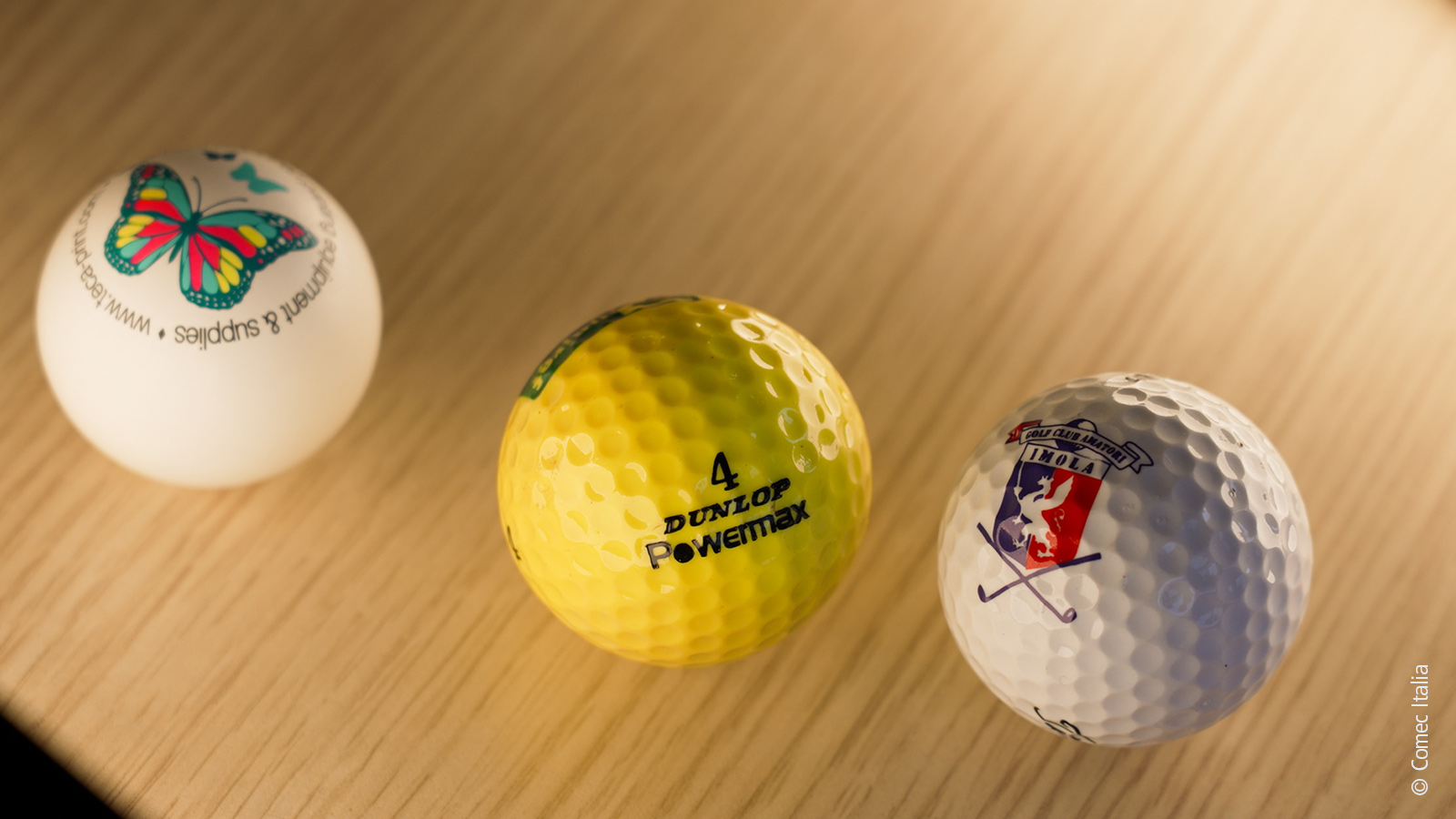

Modular and scalable control technology for pad printing machines
The wide range of applications for the pad printing process demands an equal amount of flexibility from the automation technology it uses. Simplicity and efficiency are just as important in the project planning of the mostly customer-specific systems. The printing machine manufacturer Comec Italia relies for this on PC-based control from Beckhoff and thus benefits from high modularity, scalability and simple programming.

As a fast and clean direct printing process, pad printing is suitable for all types of surfaces: Computer keyboards, ballpoint pens, packaging materials, car parts, household appliances and toys are now being printed with this technology. "By the end of the 1970s, when the plastics market started to experience strong growth, Comec Italia launched its first pad printing solutions on the market," says Manuele Baggini, Sales Director of Comec Italia and already the second generation at the helm of the company. Since the 1980s, Comec Italia has almost exclusively manufactured pad printing machines for the decoration and customization of products – and has repeatedly set technological milestones in the process. Today, Comec Italia is an international force in pad printing and a partner to some of the best-known corporations in numerous sectors, including the automotive, household appliances, medical, cosmetics, tools and beverage industries.
Pad printing – the devil is in the details
The pad printing process appears quite simple in its basic steps: A silicone pad picks up the image or lettering to be printed in ink form from a plate engraved with the print motif (negative) and transfers it directly to the object. What sounds easy in theory is anything but simple in practice.
The basic design of the pad printing machines from the company based in Cavaria in northern Italy consists of the printing plate, an ink box that moves over the plate and also wipes excess ink from the non-engraved areas, and the pad that picks up the ink from the printing plate and applies it to the workpiece. The more colors a motif requires, the more pads, printing plates and printing processes are necessary. “Everything has to work quickly, in perfect synchronization and with very high precision,” Manuele Baggini outlines the typical challenges: Speed and precision are only compatible if the mechanics are manufactured precisely and if the automation technology works quickly and absolutely synchronously.
Furthermore, in addition to mastering the core process, the loading and unloading systems as well as devices for the pre-treatment and post-treatment of the parts must also be integrated. In many cases, these process steps are essential for the print, to ensure that the ink dries and adheres to the surface of the component.

“Our first machines were electromechanical and still worked very simply,” recalls Manuele Baggini: “The operator had to manually load and unload the parts, which were usually only printed in one or two colors.” Naturally, Comec Italia customers demanded faster and more powerful machines over time, which went hand in hand with the development of electronic and pneumatic automation systems. Gradually, the pad printing machines were expanded into complete systems with infeeds, robots and pick-and-place mechanisms which caused output to accelerate significantly. Manuele Baggini cites caps such as those used by the beverage industry as an example: “Today, we have pad printing machines that print up to 120,000 caps per hour. That’s almost 35 caps per second.”
Comec Italia says it is one of only a few companies that can still produce the entire pad printing system in-house: From machine design and programming to joinery and pad manufacturing, to machine varnishing and consumables. “We still have a catalog of standard machines, but most new systems are designed based on specific customer requirements. Accordingly, automation technology must be flexible to adapt.”
Integrated, scalable and open system
Comec Italia builds pad printing machines with up to seven axes that are fully equipped with Beckhoff technology: From the machine control to the motors and drives, including safety. “Our relationship with Beckhoff began many years ago. What we liked right off the bat was the simplicity, but we also liked the effectiveness that PC-based control offers as a modular, flexible and perfectly integrated system even more,” says Manuele Baggini. These include PLCs, drives and communication modules that facilitate the entire workflow, from design and project planning to wiring, programming and installation of the machine. According to Manuele Baggini, the EtherCAT I/O system from Beckhoff has long been essential for Comec Italia, as it optimally supports the wiring of additional modules and their integration into the control architecture.

Comec Italia automates its pad printing systems with TwinCAT software and, depending on requirements, with various built-in Panel PCs from Beckhoff: CP2216, CP2712, CP6607, CP6701. The motion axes are implemented via TwinCAT NC PTP and AX5000 Servo Drives with AX5801 TwinSAFE option card and AM8000 Servomotors with One Cable Technology (OCT). In addition, there are different EtherCAT and TwinSAFE Terminals.
“Furthermore, the standard PC-based architecture of the Beckhoff system makes it much easier to program and customize the interfaces for various customers,” continues Manuele Baggini, adding, “Even over 15 years ago, we were able to use Beckhoff technology to remotely connect to the machines in order to download data or diagnose any problems that might have arisen.” From a business point of view, this brought and still brings enormous advantages, since the Comec Italia machines are installed all over the world. On the HMI side, PC-based control and the latest generation of multi-touch panels also generate improvements, for the customer and especially for the machine operator, according to Manuele Baggini.
Continuous development and improvement
With Beckhoff technology, Comec Italia customers can leverage high-performance machines from which they can call up valuable production information at any time. And Comec Italia can constantly monitor the machines remotely, i.e. to retrieve parameters, productivity, machine stops and alarms, which improves system availability and profitability.
"Beckhoff and their local team in Italy always provide expert service and technical support, are flexible and respond virtually in real time, to a wide variety of requests," says Manuele Baggini with satisfaction. This experience encourages him to also implement additional innovations together with Beckhoff and with PC-based control: They are currently evaluating the integration of TwinCAT Vision, which will expand the range of available machine vision functions. The advantage: With high-performance image processing as an added component to the Beckhoff platform, the benefits of an integrated development system also come into play. The image processing systems are used to center the plates – and thus the inks – automatically, to align the workpiece and to precisely select the printing area.
In addition, Comec Italia customers' demand an architecture that is as standardized as possible and capable of Industrie 4.0 communication and integration. "The Beckhoff system already has all the features to effectively master this task as well," concludes Manuele Baggini.